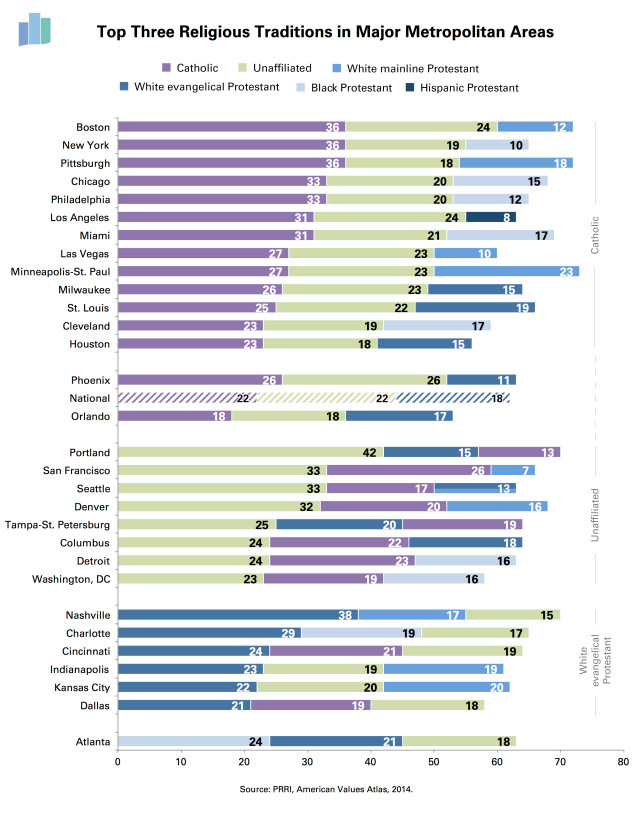Earlier this year, we took a look at the top three religious traditions that dominate the U.S. Now, using the metro areas variable of the American Values Atlas (AVA), we turn to our country’s cities, where we find a similar trend: Catholics and the religiously unaffiliated dominate.
Here’s the breakdown:
- Catholicism is the top religious group—or tied for the top religious group—in 15 of the major metro areas.
- The religiously unaffiliated is the top “religious” group—or tied for the top religious group—in 10 of the major metro areas.
- And don’t forget about white evangelical Protestants, who take the top prize in six of the major metro areas.
- Atlanta is the only metro area that doesn’t have Catholics, the religiously unaffiliated, or white evangelical Protestants in the number one slot; that prize goes to black Protestants.
[Click to enlarge.]
Here are a few other facts we learned:
- Urban areas attract the unaffiliated; the religiously unaffiliated are among the top three religious groups in every metro area polled.
- Catholics also love cities; Catholicism is among the top three religious groups for nearly every metro area—only Nashville, Charlotte, Indianapolis, Kansas City, and Atlanta don’t have Catholics among the top three.
- In every metro area where Catholicism takes number one, religiously unaffiliated takes number two.
- All but nine metro areas have Catholicism and the religiously unaffiliated in the top two.
- Nashville has the largest percentage of one singular religious group: nearly four in ten (38 percent) residents identify as white evangelical Protestant.
- Portland has the largest percentage of one singular “religious” group: 42 percent identify as religiously unaffiliated.
Metro areas are based on U.S. Census Bureau definitions of Metropolitan Statistical Areas (MSAs). The metro areas may include both urban and non-urban populations. For instance, the Boston metro area encompasses the Boston-Cambridge-Newton, MA-NH Metropolitan Statistical Area.






